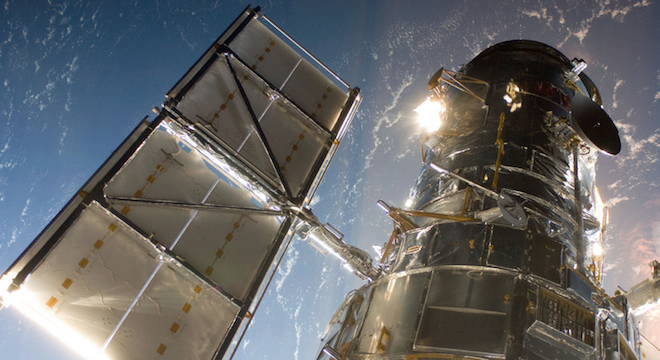What’s better than the Hubble Space Telescope? Try two, more powerful spy space telescopes given, with few to no strings attached, to NASA, by a little-known U.S. intelligence agency.
The scenario sounds like the pitch for a sci-fi story, but it’s now become reality thanks to the National Reconnaissance Office (NRO), the 50-year-old U.S. agency responsible for managing all of America’s spy satellites.
On Monday, NASA officials confirmed that they had accepted from the NRO a generous donation of two complete, but previously unused and presently grounded orbital telescopes, each of which is capable of surveying an area 100 times larger than that of the Hubble Space Telescope, NASA’s current workhorse.
“In January of 2011, I got a phone call [from NRO] saying, ‘we have some qualified space hardware that we need to dispose of or let someone else take advantage of,'” explained Michael Moore, NASA’s acting deputy director of astrophysics, in a conference call with reporters on Monday afternoon.
“There were no strings attached, we didn’t physically move anything, we just swapped a piece of paper,” Moore added.
The telescopes are currently being housed in storage in Rochester, New York, at a warehouse of aerospace contractor Exelis. Each telescope contains a 7.9-foot wide circular mirror, the same size has Hubble, but both mirrors are also much deeper than Hubble’s, giving them their wider fields-of-view.
And yet, each of the telescopes is also lighter than Hubble’s 24,500 pounds, which will be helpful in cutting down the costs of launching them into space.
Moore said that “at least one” of the telescopes had gone through all the necessary tests and could function as it was designed if launched aboard a spacecraft today. However, he also noted that the telescopes were in various states of disassembly, with parts strewn about.
Neither NASA nor the NRO would explain exactly why the telescopes hadn’t been used, much less why they had been built in the first place, citing classified information.
But NASA is understandably thrilled with the news, as the donation may provide the agency with an unparalleled tool for studying dark energy — the mysterious force theorized to be involved in the rapid expansion of the universe — and cost-savings up to $250 million.
But “tool,” singular, is the optimum word when it comes to NASA’s ability to utilize the NRO’s mint telescopes: Only one telescope is likely to ever make it into orbit, given NASA’s current budget constraints.
“The two telescopes are identical, we received them in a packaged deal,” said Paul Hertz, NASA’s astrophysics division director, in the conference call on Monday. “We don’t anticipate ever being rich enough to use both of them, but it sure would be fun to think about.”
Although NRO gifted NASA its hardware free of charge, the telescopes presently lack the cameras, sensors and other scientific instruments necessary for turning them into civilian eyes in the sky, which NASA would have to outfit, as The Washington Post noted.
NASA will be responsible for paying for the costs of launching the telescopes up into space in the first place, typically among the most expensive portions of any space mission.
Still, NASA officials were optimistic that the agency would be able to find a way to get one of the telescopes up into space within the decade, by 2020 at the earliest, possibly by enlisting partners in the private sphere.
“We’re looking at all possible opportunities for cost-sharing on this,” Hertz said.
Ideally, the telescope would help shave-off some of the costs associated with NASA’s planned Wide-Field Infrared Survey Telescope (WFIRST) telescope, a $1.5 billion project that has been delayed due to cost overruns with another planned space telescope, Hubble’s replacement, the James Webb Space Telescope (JWST).






